
Morning Hope Seijin no Hi // Furisode Galore
・Furisode - This is the type of Japanese kimono worn by younger, unmarried women and girls. It is distinguishable by its long sleeves and often comes in bright colors. Furisode is the typical kimono worn during Japan's Coming of Age Day ('Seijin no Hi'). ・Tomesode - A formal kimono that's worn by women who are married.
furisode
Classification and special features For unmarried women, the furisode is the most gorgeous type of formal dress that can be worn in festivals and in other formal scenes. The most striking feature of the furisode is that the dangling part of its 'sode' (sleeves) are quite long.
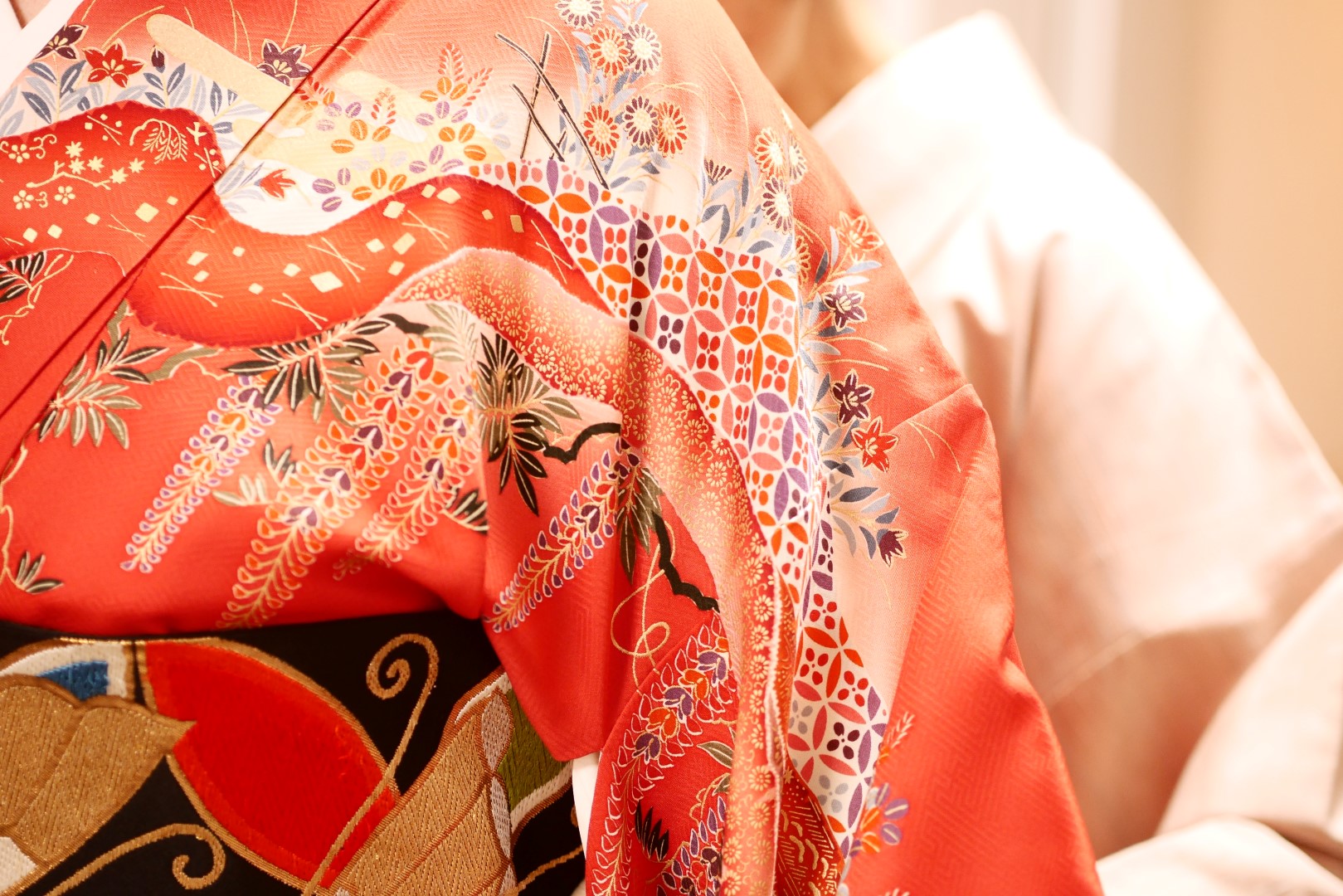
Furisode or formal Kimono rental in Tokyo Harajyuku ¥50000 all inclusive system
1. Hold the center and the short lines of kake-eri on the collar called kake-erisen. Pull the collar to both sides to straighten the grain lines of the collar. maikichi It's important to straighten the fabric grain throughout putting on. If you fold all parts exactly, you can wear nicely.
Japanese Kimono Set Furisode Kimono Set Japanese Traditional Long Sleeved Costume for Adult
Chayatsuji Kimono | Furisode | 5 Easy Obijime StylesWith furisode ensembles, you have almost unlimited ways of how to tie your obijime. When it comes to the.

Coming of Age Day in Japan 2015 150+ Kimono Pictures Japan fashion, Coming of age day
Children wear kimono for the Shichi-go-san (7-5-3) festival, which celebrates children's growth at the ages of seven, five, and three; many women wear furisode to celebrate Coming-of-Age Day the year they turn twenty; and some brides still choose to dress in the traditional all-white shiromuku ensemble for their wedding. Wearing a kimono is.
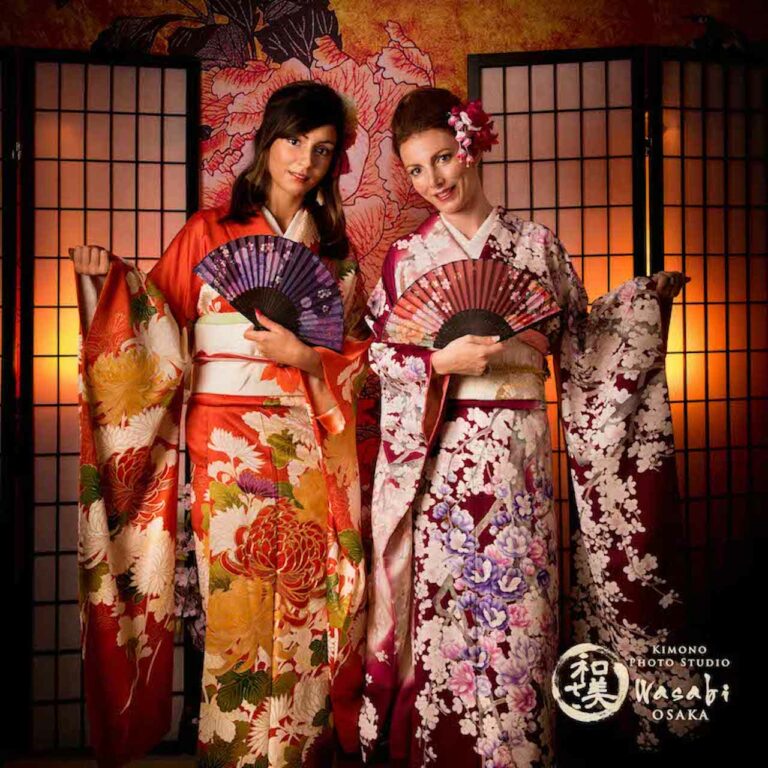
What’s the difference between a kimono and a furisode? Kimono Photo Studio Wasabi Osaka
The "Seijin-shiki (Japanese coming-of-age ceremony)" is held in various areas of Japan, and you can often see young women wearing "Furisode (long-sleeved kimonos)". On this occasion, I will introduce you to the "Seijin-shiki" and "Furisode". What is the "Seijin-shiki"? Origin Who are the "New adults"? Method of participation Clothes
The Furisode set I have but haven't yet sucessfully put on properly, and definitely haven't worn
Make sure to wear a formal kimono like a homongi, furisode, irotomesode with a wide fukuro obi belt (find out more about different types of traditional kimono). Most formal kimono have a very light color and obi have gold and silver woven into the pattern. If you don't own a formal kimono, try to stay with light colors and bring gold or.
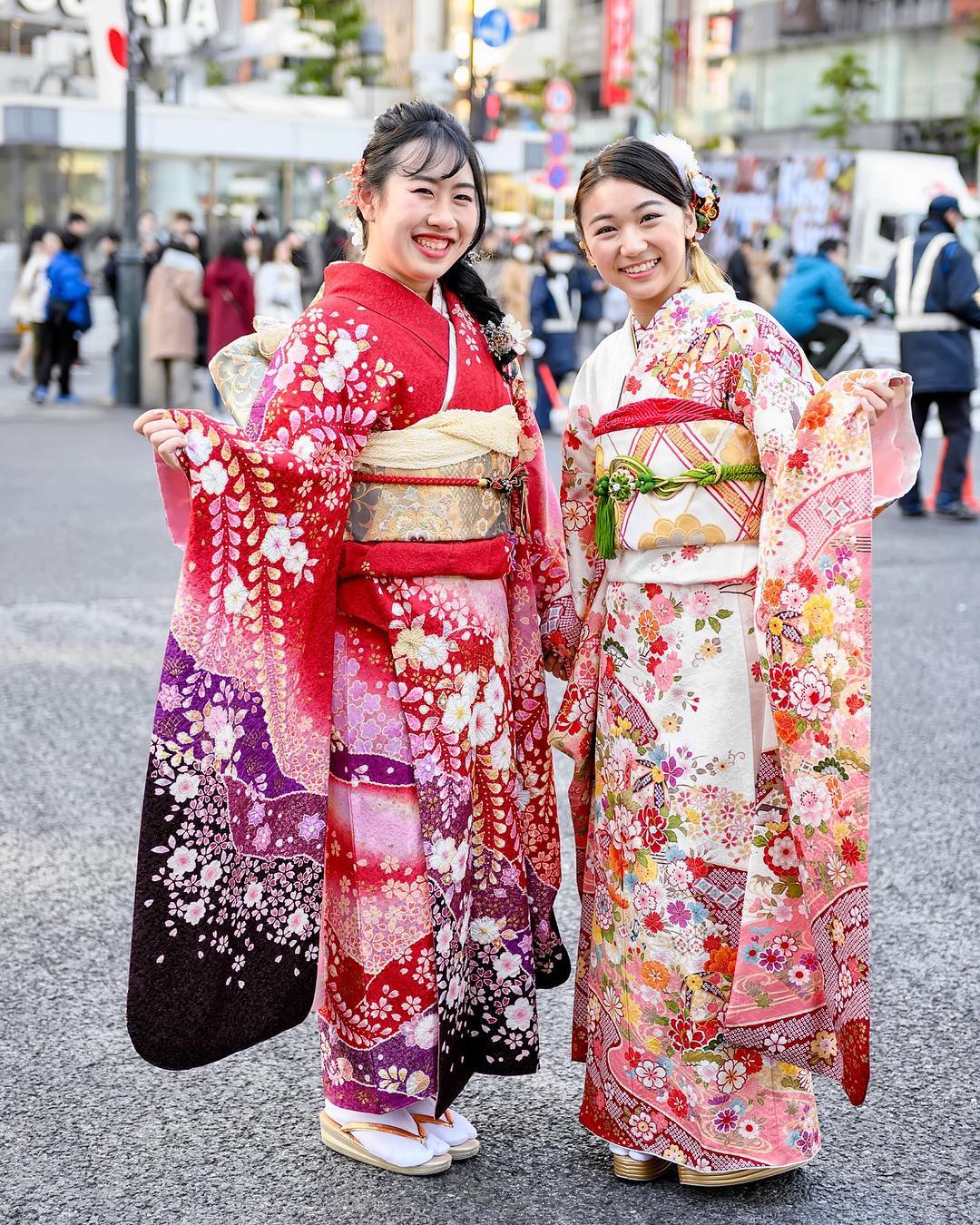
Tokyo Fashion Beautiful traditional Japanese furisode kimono on the streets of Shibuya, Tokyo
A furisode ( 振袖, lit. 'swinging sleeves') is a style of kimono distinguishable by its long sleeves, which range in length from 85 cm (33 in) for a kofurisode (小振袖, lit. 'short swinging sleeve'), to 114 cm (45 in) for an ōfurisode (大振袖, lit. 'large swinging sleeves').
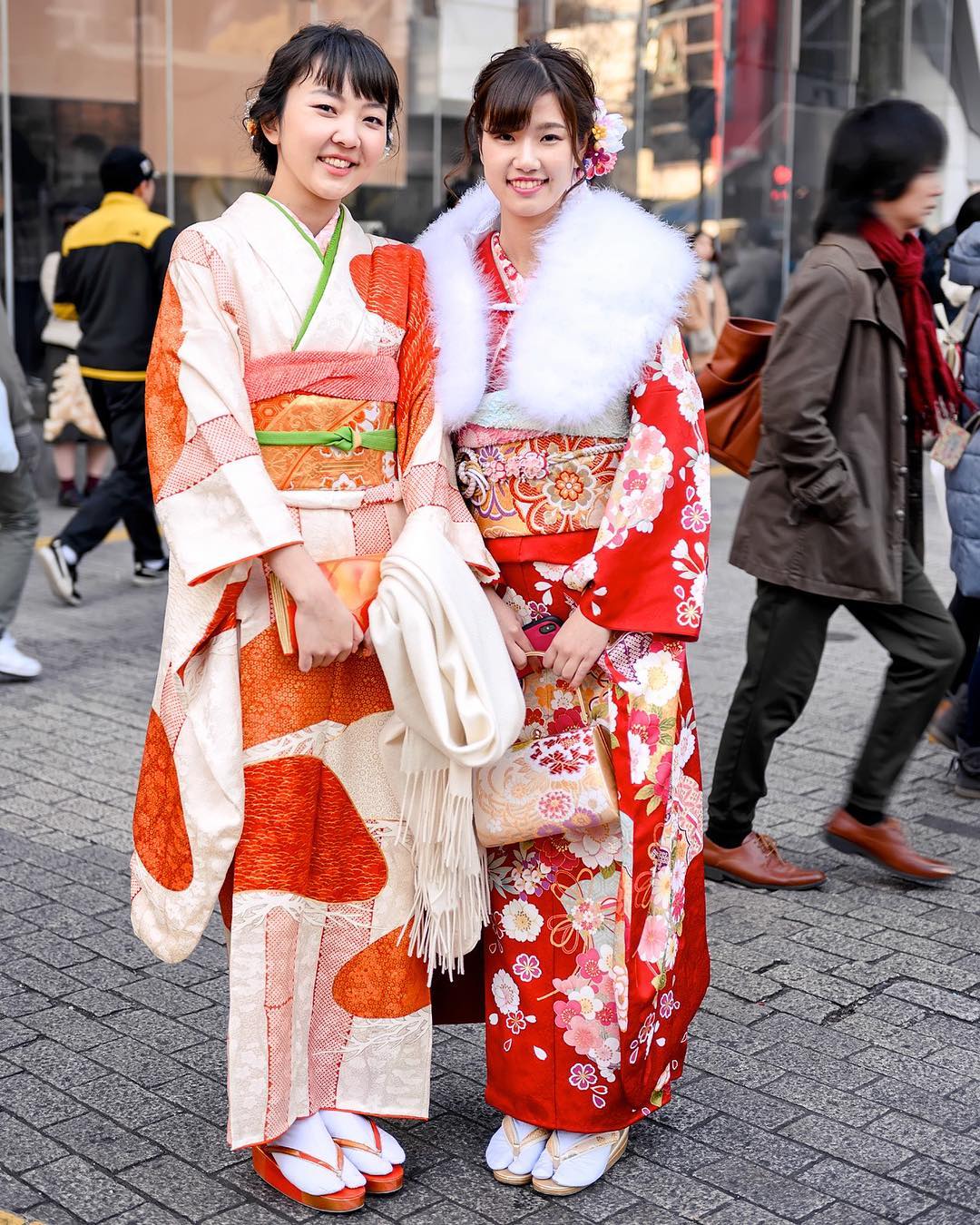
Tokyo Fashion Beautiful traditional Japanese furisode kimono on the streets of Shibuya, Tokyo
The length of kofurisode sleeves : from 76cm to 86cm. also called nisyakusode. Women wear ofurisode as bridal costume and tyufurisode is for a coming-of-age ceremony, graduation ceremony, and party. These days,women's height is getting taller,so ofurisode is often worn. Pure white furisode for bride and utikake is categorized as ofurisode.

Coming of Age Day in Japan Kimono Pictures 2014 Japanese street fashion, Tokyo fashion
Definition The kanji for furisode literally reads "swinging sleeve," which is appropriate, because a furisode is a traditional Japanese kimono with long, hanging sleeves. The lengths of the sleeves depend on the style of the furisode, which will be discussed a little later. Historically, furisode were worn by young children of the wealthy.

2014 Japanese of Age Day" ( 成人の日 Seijin no Hi ) celebration for those that have
Put simply, 'kimono' ( 着物) is the generic name. It's literally 'something you wear'. A 'furisode' is just 1 style of kimono, out of many, and we'll focus on it for this post. In Japanese, the word 'furisode' ( 振袖) means 'swinging sleeves'. The first kanji, 'furi' ( 振 ), is the 'swing' bit, and 'sode' ( 袖) is the word for sleeve.

How To Wear Furisode Kimono Visit Nagasaki
Furisode have layers and layer on them and are made out of heavy silk with lots of padding on underneath. The others aren't kidding when they say it could actually be dangerous to wear it outside. There's a reason why yukata are worn in the summer, because it's really hot.

Coming of Age Day in Japan Kimono Pictures 2014 Coming of age day, Coming of age, Kimono
A furisode kimono is a type of kimono that is worn by unmarried women in Japan. It is the most formal type of kimono, and is often brightly colored and elaborately decorated. Furisode kimonos are worn with an obi, or sash, that is tied in a very complicated way. Furisodes are Japanese expressions that mean'swinging sleeves.'
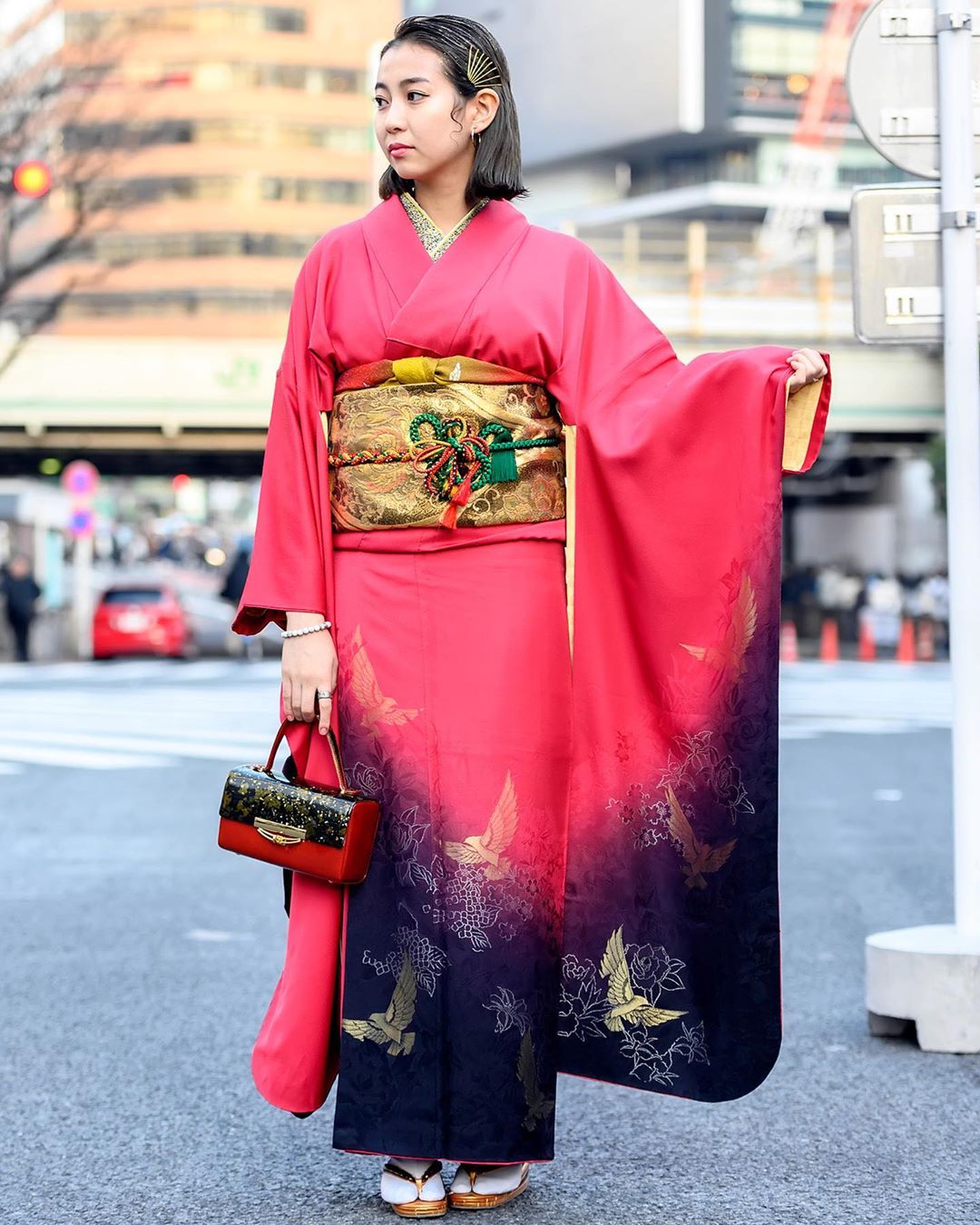
Tokyo Fashion Traditional Japanese furisode kimono on the streets of Shibuya, Tokyo on Japan’s
Things you prepare They are required for wearing furisode and tying bunko. Tabi socks Hadajuban and susoyoke underwear / kimono slip Towels (padding) Haneri collar Erishin collar stiffener Kasane-eri collar Nagajuban for the furisode 3~5 himo (munahimo, koshihimo, karihimo) Furisode Korin belt 2 datejime sash Obiita board Fukuro obi
!Carpe Diem! about Japanese culture
Furisode are a type of kimono that have long hanging sleeves in the forearm. They are only worn by adult single women as they symbolize availability for marriage. Furisode are amongst the most elegant and expensive form of kimono. They typically cost over 1 million yen. They are also surprisingly expensive to rent.

Many women wear Furisode to comingofage ceremonies. furisode Ageha kimono style/gyaru
A furisode is a type of kimono generally worn by young women. It is often worn at coming of age ceremonies, weddings and other events. It's a little difficult for someone who is not used to seeing kimonos to distinguish between a furisode and other kimonos. The unique characteristic of a furisode is the length of its sleeves.